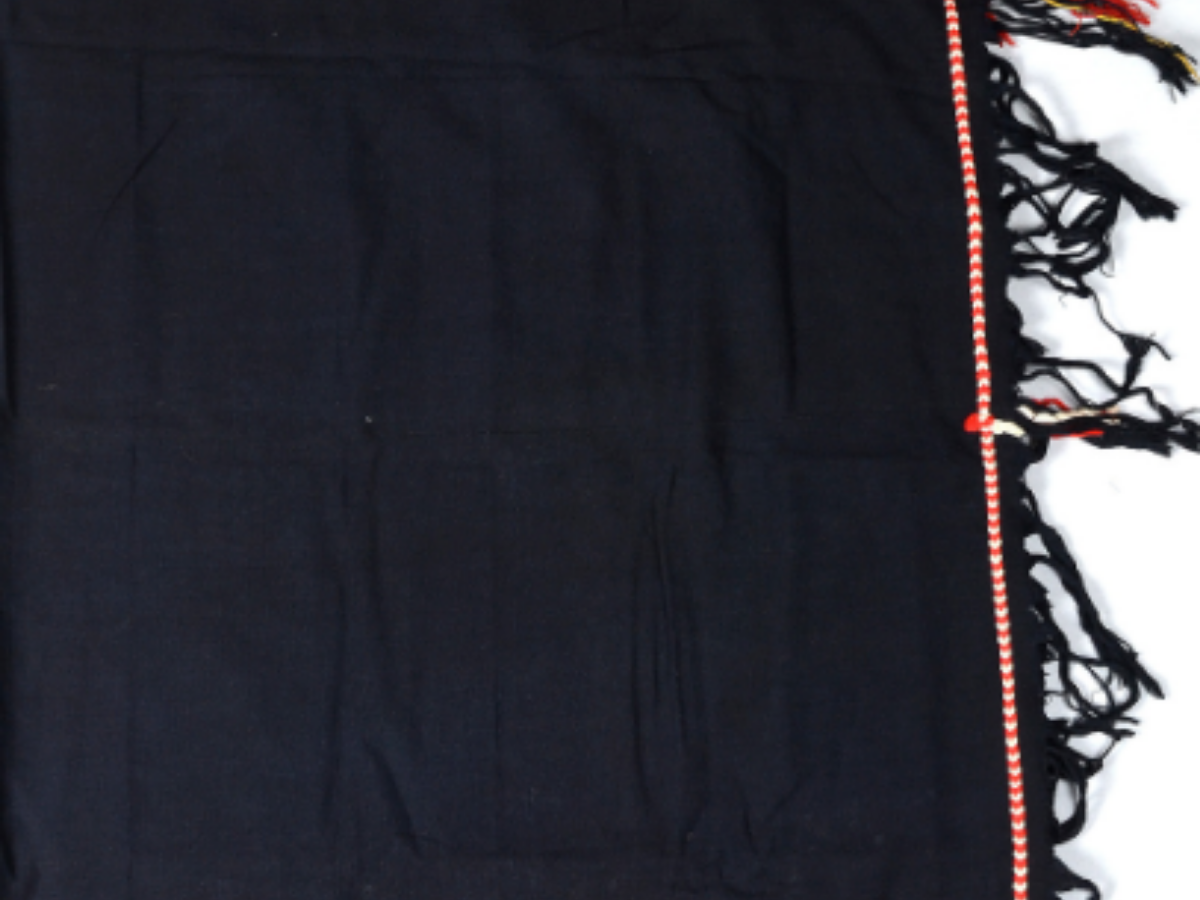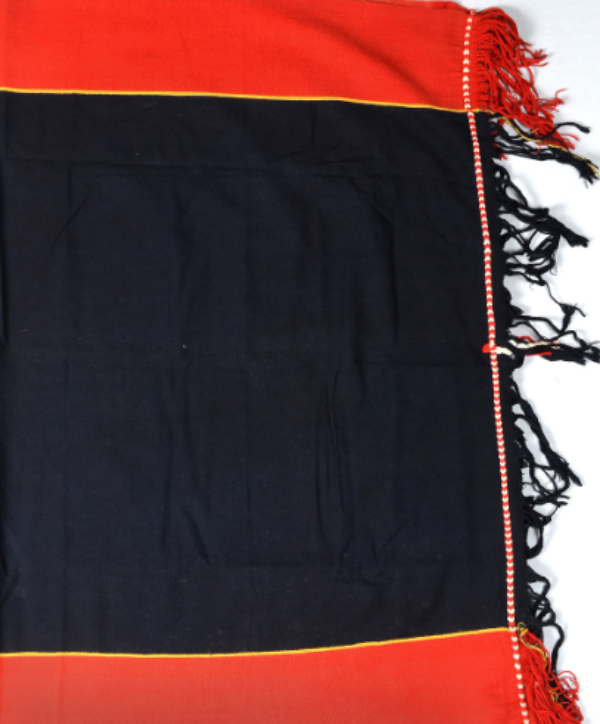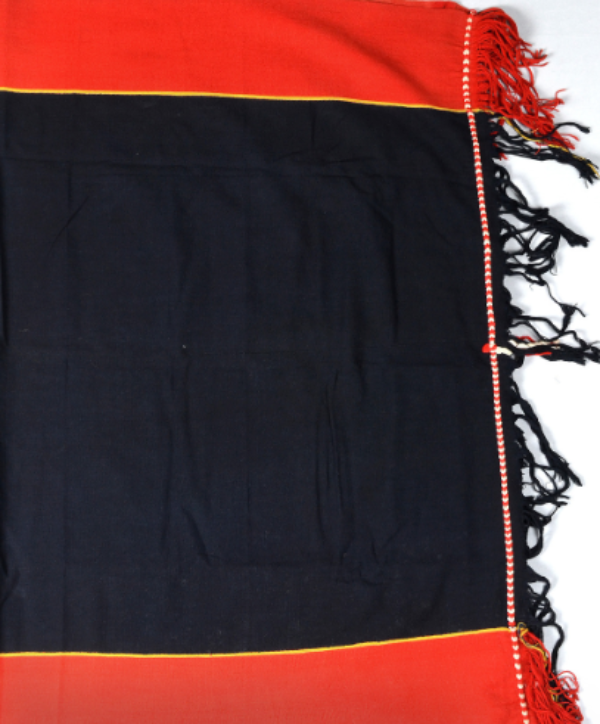State
Tribe Name
Art Type
short description
The Chakhesang tribe, an indigenous group of the Naga people in Nagaland, India, are very proud of its textile traditions, especially its shawls. Among the many such important clothing items is a black shawl with two broad tangerine panels on both sides, separated from the central black field by a narrow yellow line.
Thumbnail

Filter Postion
Left
Filter Background
Off
Theme
Filter Header Image

content
Image

description
The Chakhesang tribe, an indigenous group of the Naga people in Nagaland, India, are very proud of its textile traditions, especially its shawls. Among the many such important clothing items is a black shawl with two broad tangerine panels on both sides, separated from the central black field by a narrow yellow line.
This shawl is handwoven using the ordinary hand loom, mainly from cotton or wool, to make it tougher and yet comfortable for the hilly region it comes from. Shawls are valued very highly among the Chakhasang people, bearing immense cultural and symbolic significances. The patterns and colors some signify the social status, achievements, and identity of the wearer. They are most likely warriors and respected members of the societies who wear these patterned shawls, which are different from others in the community that act as markers of their prestige and honor.
The traditional weaving art of Chakhesang women has been kept intact through generations, adopting design ideas from nature, fairy tales, and tribal beliefs. The textiles have gone through a modernization phase in both design and usage, yet they still connect with festivals, rituals, and ceremonies, thus highlighting heritage and pride. Other government support and cultural programs also work to promote and sustain the traditional weaving.
This shawl is handwoven using the ordinary hand loom, mainly from cotton or wool, to make it tougher and yet comfortable for the hilly region it comes from. Shawls are valued very highly among the Chakhasang people, bearing immense cultural and symbolic significances. The patterns and colors some signify the social status, achievements, and identity of the wearer. They are most likely warriors and respected members of the societies who wear these patterned shawls, which are different from others in the community that act as markers of their prestige and honor.
The traditional weaving art of Chakhesang women has been kept intact through generations, adopting design ideas from nature, fairy tales, and tribal beliefs. The textiles have gone through a modernization phase in both design and usage, yet they still connect with festivals, rituals, and ceremonies, thus highlighting heritage and pride. Other government support and cultural programs also work to promote and sustain the traditional weaving.
Image Mode
landscape
promoted
On
Verified
Off
